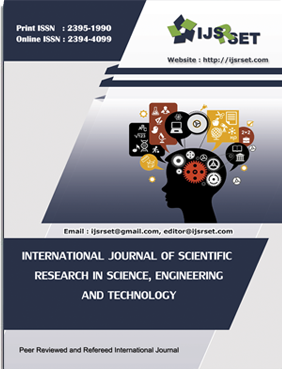Examining Customer Loyalty and Retention as Drivers of Satisfaction in Internet Banking
DOI:
https://doi.org/10.32628/IJSRSET24113152Keywords:
Customer Loyalty, Retention, Satisfaction, Internet Banking, Digital Banking, India, Rural-Urban, User EngagementAbstract
The rapid evolution of digital technologies has revolutionized the banking industry, making internet banking a key financial service globally. In India, increasing smartphone penetration and internet accessibility have accelerated the adoption of digital banking, particularly in regions like Haryana, where customers exhibit diverse banking behaviors across urban and rural demographics. This study examines the role of customer loyalty and retention as primary drivers of customer satisfaction in internet banking. The research investigates how customer engagement, security perceptions, and service efficiency influence long-term digital banking adoption. A survey-based quantitative approach was used to analyze responses from 600 internet banking users in Haryana. The study employed correlation analysis, t-tests, and regression models to evaluate relationships between customer satisfaction, loyalty, and retention, while also assessing the impact of demographic factors such as age, education, and location. Results indicate a strong positive association between loyalty and satisfaction (r = 0.372, p < 0.01), confirming that satisfied users are more likely to remain loyal to their banking platform. Additionally, transaction security was found to be a significant determinant of retention (r = 0.116, p < 0.01), emphasizing the need for robust security protocols. The study highlights that rural users report lower satisfaction with security and reliability compared to urban users, pointing to the need for localized digital literacy initiatives and enhanced cybersecurity measures. Banks must adopt targeted engagement strategies to improve user experience and foster long-term loyalty. The findings provide valuable insights for financial institutions to refine their customer retention models, ensuring sustainable digital banking adoption in India's evolving fintech landscape.
Downloads
References
Acharya, F. (2022). The evolving landscape of internet banking interfaces: Impacts on customer satisfaction in Northern India. Journal of Online Financial Services, 18(3), 12-27.
Athalye, M. (2021). How digital transformation affects customer loyalty and retention in internet banking: Haryana's perspective. E-Banking Evolution Journal, 27(6), 48-60.
Bose, U. (2015). Integrating blockchain with internet banking: A paradigm shift in customer satisfaction metrics. Emerging Banking Technologies, 16(2), 46-59.
Chaukkar, P. (2019). The role of financial literacy in promoting customer satisfaction and retention in digital banking. Digital Banking & Education, 26(4), 29-42.
Dhillon, A. (2022). Convenience vs. security: Balancing the scales in online banking. Global Banking Review, 29(3), 5-20.
Ganapule, R. (2017). Relationship dynamics between internet banking ease-of-use and customer loyalty. Banking Usability Insights, 24(5), 28-41.
Gupta, R., & Agarwal, N. (2019). How customer support influences e-banking satisfaction: Insights from Haryana's rural areas. Asian Banking Journal, 15(7), 12-25.
Handa, V. (2013). The relationship between service quality, satisfaction, and loyalty in internet banking. Quality in E-Banking Services, 10(1), 15-30.
Iyer, R. (2014). Trust, satisfaction, and loyalty: Unraveling the relationship in internet banking. Trust in Banking Journal, 12(4), 26-41.
Jha, P. (2021). The role of customer support in determining satisfaction and retention in internet banking. Support Systems in E-Banking, 27(3), 52-68.
Kulkarni, S. (2023). Machine learning in predicting and enhancing customer satisfaction in internet banking. Advanced Banking Technologies, 32(1), 10-24.
Nair, D. (2018). Personalized banking experiences and their role in enhancing customer loyalty and retention. Banking Personalization Journal, 21(7), 14-28.
Oberoi, V. (2020). The impact of localization on internet banking usability: A study centered on Haryana's demographics. Regional Banking Journal, 17(3), 20-35.
Prakash, L. (2013). The impact of user interface design on customer loyalty in internet banking: A Haryana perspective. UI and Banking Loyalty, 11(8), 40-54.
Sharma, U. (2017). Relationship marketing and its influence on loyalty and retention in the internet banking sector. Relationship Marketing Journal, 19(6), 30-44.
Tamhankar, H. (2022). The link between e-banking service speed, satisfaction, and long-term customer retention. Fast Banking Journal, 28(8), 16-30.
Thakur, K. (2016). Cybersecurity protocols and their role in building trust in internet banking platforms. Banking Security and Trust Journal, 14(4), 15-30.
Trivedi, Y. (2020). The role of chatbots and AI in elevating customer satisfaction and long-term loyalty in internet banking. AI in Banking Services, 28(4), 22-37.
Umrani, Y. (2018). Mobile banking innovations and their impact on customer loyalty and retention. Mobile Innovations in Banking, 26(6), 44-57.
Vaidya, W. (2023). Digital incentives and their impact on customer satisfaction and retention in internet banking. Incentive Programs in E-Banking, 31(2), 14-29.
Varrier, D. (2021). Assessing the digital divide: How education levels influence e-banking satisfaction rates. Edu-Banking Review, 28(4), 45-57.
Verma, C. (2023). Future trends in internet banking: Gauging potential impacts on user satisfaction. Future Banking Journal, 33(5), 46-60.
Xavier, K. (2022). A comparative study of urban vs. rural internet banking trends in Haryana. Rural Finance Digest, 25(1), 15-30.
Rathi, L. (2014). Internet banking in the era of cloud computing: Prospects and challenges. Cloud and Finance Journal, 7(2), 9-21.
Yadav, S. (2013). Comparative analysis of traditional vs. digital banking in India: Implications for customer satisfaction. Indian Banking Chronicle, 12(1), 56-68.
Downloads
Published
Issue
Section
License
Copyright (c) 2025 International Journal of Scientific Research in Science, Engineering and Technology

This work is licensed under a Creative Commons Attribution 4.0 International License.





